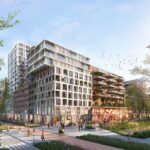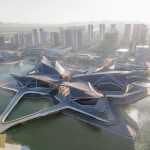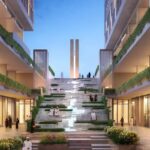Jorn Utzon Architect Talk, Book Photo, Biography, Denmark, Buildings
Jorn Utzon Architecture Talk
20th Century Danish Architect : Modern Buildings Information + Images
post updated 15 December 2024
RIAS Conference 2004 : Jørn Utzon by Professor Richard Weston – Review by Adrian Welch
Jorn Utzon by Professor Weston, 2004
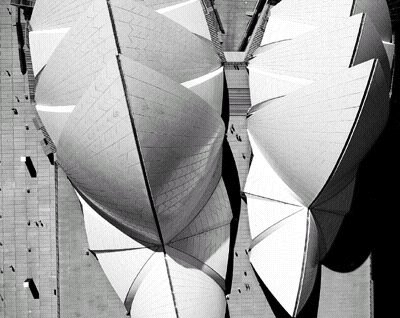
Sydney Opera House by Jørn Utzon: image supplied by RIAS
Biography on Jorn Utzon
Utzon by Professor Richard Weston
Jorn Utzon Architect – Biography
Ok, so I’d heard Richard’s talk before (somewhere in Scotland recently – and not at the RIAS, though that too was similar, reviewed by Bruce Ross below) but this was inspiring stuff, Jorn Utzon and his works, principally the Opera House.
Jorn Utzon has built the ‘ultimate blockbuster building’ that every city wants. The Sydney Opera House is the ‘most-recognised structure on earth’. Ot is vety popular but somehow ‘written out’ of architectural histories. Frampton ‘sneaked’ it in later. Many writers – especially Latin ones – dismissed it. ‘Utzon is completely unprecious’ about his drawings. Weston showed a picture of a sketch Utzon had done on a car windscreen, now lost of course…
Jorn Utzon Architect – Talk
Professor Richard Weston: author of the Alvar Aalto monograph by Phaidon
Jorn Utzon Talk by Professor Weston, 2001:
RIAS Edinburgh Talk – Review by Bruce Ross

Professor Richard Weston: Jørn Utzon expert and author of Utzon book
‘Maybe we should all write to him and say thank you for all buildings” suggested a humbled RIAS Secretary Sebastian Tombs at the conclusion of last Thursday’s lecture on Jorn Utzon by Richard Weston. Professor Weston spoke eloquently and entertainingly for over an hour on the subject of his forth-coming book, the Danish architect Jørn Utzon.
The scene for the narrative was painted in early on when the audience were informed that contrary to popular belief, the architect was not dead, but currently residing in Majorca. Utzon was a recluse from the public eye, a sensitive figure and further more a committed family man. He was – sorry is – the ‘only architect who can have his fantasy in construction’, according to fellow Scandinavian star, Sverre Fehn. It was clearly not long before we were all on side, and although I have never seen one of the few buildings built – as opposed to merely ‘designed’ by Jorn Utzon – I feel a pang of guilt at neglecting to write to the architect to praise his opus.
The author proudly explained how he had demonstrated to the architect that he deserved the opportunity to write – probably more correctly: produce/create – the book: Jorn had engaged the services of a publisher who was confident that he would succeed in gaining permission for the project despite the fact that Utzon didn’t give interviews and seemed perpetually recoiled from self-publicising ventures, compounded by the knowledge that he had never met the architect, nor his familiar circle.
The publisher’s quality would, quite simply, ‘win him over’. Quality was quite clearly, we inferred, most dear to the architect’s heart.
We were told at one point of the lady who had been determined to take her life by plummeting from the Sydney Harbour Bridge, but had stopped and reconsidered on sighting the Opera House gleaming below her. Far from a purely aesthetic artefact, the mighty construction, residing on a waterside plinth, recalled to her mind how hard Jorn Utzon had struggled to get it built, how much resistance Utzon had endured, how much invention he had displayed and how much (good) character he had maintained throughout the protracted period of development.
By the conclusion of the lecture it was clear that we were dealing with a good guy: Jorn Utzon’s architecture was beautiful and yet transcended the purely aesthetic, he worked hard yet seemed to project the image of a balanced life, Utzon benefited from precedents whilst formulating innovation. He proclaimed himself a ‘builder’ more than an architect and at more than one point we were told how he cheated the assumption of working within the confines of the drawing board’s territory. Typically Jørn Utzon would work on small, potent sketches in fluid lead, which would be enlarged, reversed and given to his staff to elucidate on, subject to continued, considered criticism by the architect.
The first house that Jorn Utzon built for himself on his idyllic island home – Majorca – was built largely without drawings, or the inflexibility that can accompany the resolute gestures of an architect’s pen.
Richard Weston treated us to recollections of some Jorn Utzon’s finest narrative inspirations. These were an aside from the more discernible tributes Utzon’s architecture paid to Mayan and Islamic temples, Chinese pagodas and the methodologies presented by Frank Lloyd-Wright and Le Corbusier. The speaker confided in us that he had detected traces of the latter’s influences within our subject’s buildings and drawings, which had passed many unsuspecting authors by. Whilst these concurrences might have raised a historically biased ‘oh really (how exciting)’ in the minds of some, it was the anecdotal influences that were to prove the most viable and compelling.
We were treated to one of the originary metaphors for the Opera House’s crust of tiles: like snow that has fallen on snow that has partially thawed and refrozen, and is being teased by swirling winds (hence the partially glazed tiling). It was explained how a sojourn by Utzon on a Hawaiian beach had allowed the architect to calcify the authenticity – i.e. the inspiration stemmed from nature – of barrel vaults within his buildings: ‘He was lying on the beach on the island, taking a break from his teaching is Hawaii, when a strange phenomenon of cloud passed overhead…’
There seemed to be no question of the brilliance of the architect’s spatial conjurings, the quality or dynamism of light that they supported and encouraged or the calming, enhancing effects they were capable of exerting on human life.
The stories that surrounded Jorn Utzon’s practice seemed delightfully human in scale: all new members of his staff were required to digest the two volumes of ‘on growth and form’, a mighty biological document, replete with stylised representations of all sorts of life forms; when asked to produce drawings for an art gallery, which would house a special collection of a contemporary artist’s life work, Jorn Utzon produced at first a poignant ink blot drawing, followed by a year’s worth of pregnant inactivity. This was coincidentally all very sympathetic to the artist’s approach. Thus worthy of merit and appreciation, if not reverence, and not frustration (it was fabulously suggested). Much of what was presented about Utzon on the night employed anecdote to augment the architectural processes undertaken and developed.
Richard Weston’s insight into Jorn Utzon as the only architect who can reputedly construct his fantasy would seem to make light of the fact that the architect has been having his fantasy in equal measure in concoction. Where many contemporary buildings glossily display their (heroically) token pieces of fetishised glass or plywood panelling, Jorn Utzon’s offspring carry the traces of an exciting and considered germination. Whereas all glass can shine when resoundingly buffed, not all tiles, I would imagine, could pull off such a resolute impression of diversely shifting snowfall.
Utzon’s perversities, manifested in his drawings of salt, models of dissectible spheres and billowing clouds of concrete, seem to succeed because of their integrity and honesty. Where Jorn Utzon differs from a number of the architects currently in practice, I wager, is in his fetishisation – not of materials – but of (technological) innovation and – ultimately – his own idiosyncratic reasoning. His is clearly an architecture built of passion.
Jorn Utzon talk, again by Professor Richard Weston at the RIAS Conference 2004
Location: Copenhagen, Denmark
Danish Architect Practice Information
Former Danish architects practice
The spelling of Jørn Utzon has been recast as Jorn Utzon so typical browsers can provide an intelligible character.
Danish Architecture
Contemporary Architecture in Denmark – architectural selection below:
Design: AART architects with SLA, Niras and Thøgersen & Stouby
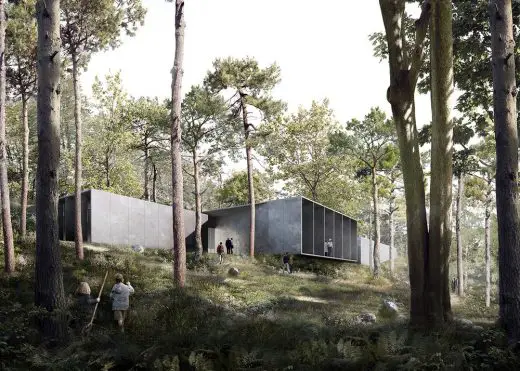
image courtesy of architects office
The Danish Cold War Museum in Rold Forest, Jutland
Design: C.F. Møller Architects
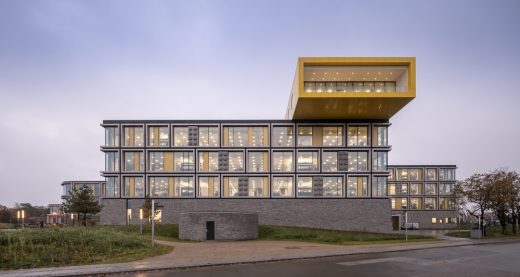
photograph © 2019 Adam Mørk
The New LEGO Group Campus in Billund
Sydney Opera House
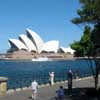
photo © Derek McGavigan
Buildings / photos for the Jorn Utzon Architecture Talk page welcome

